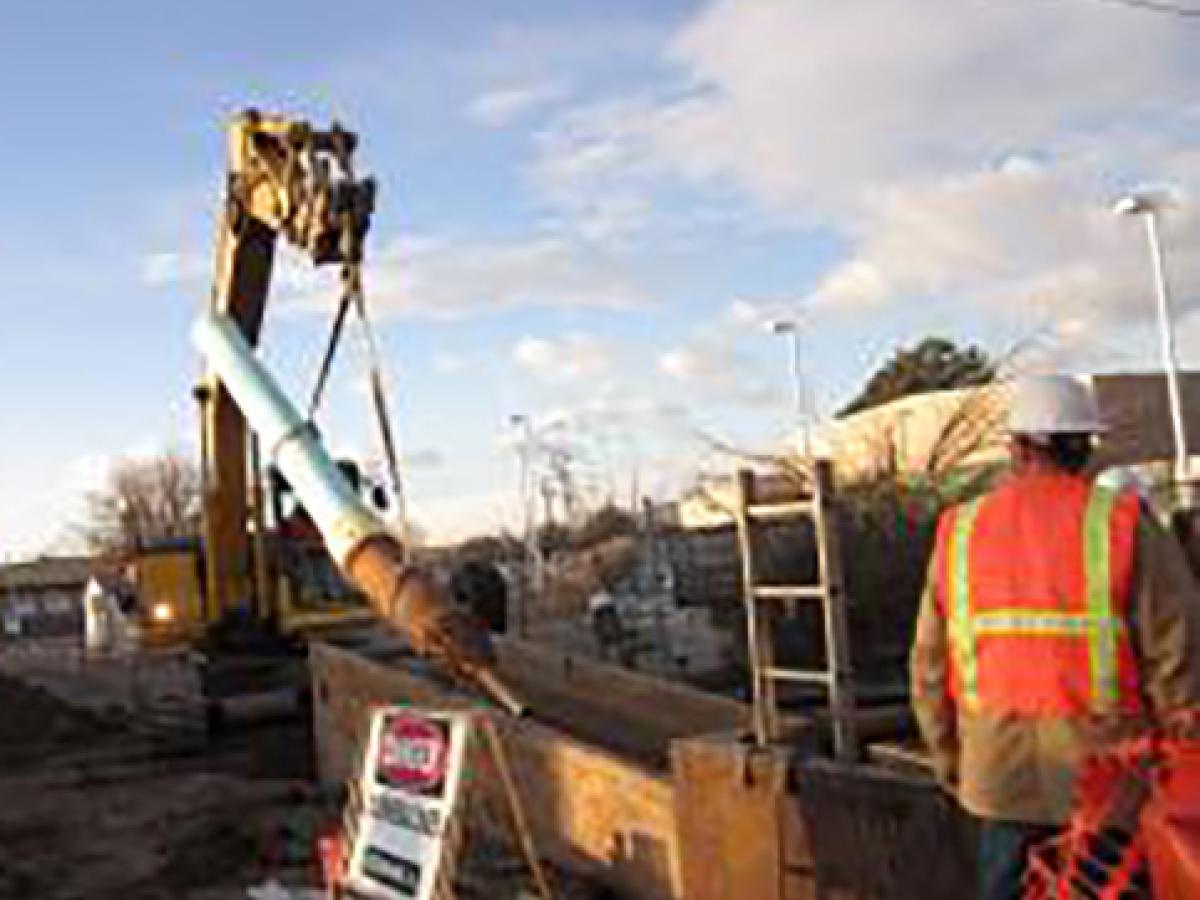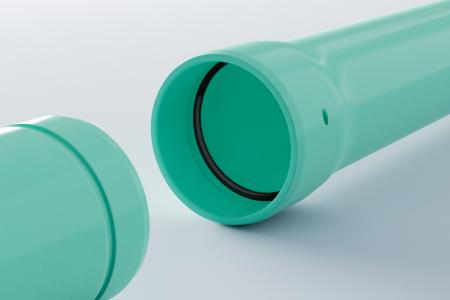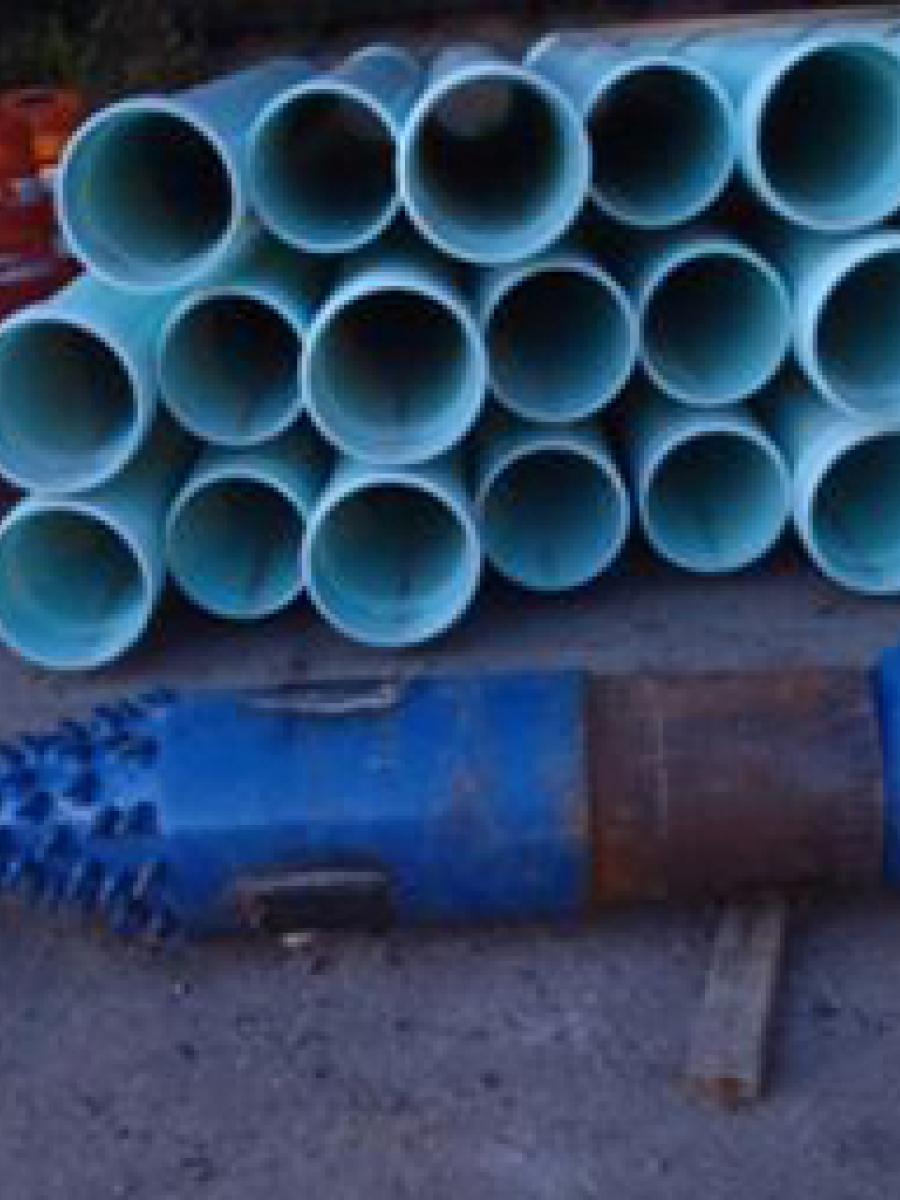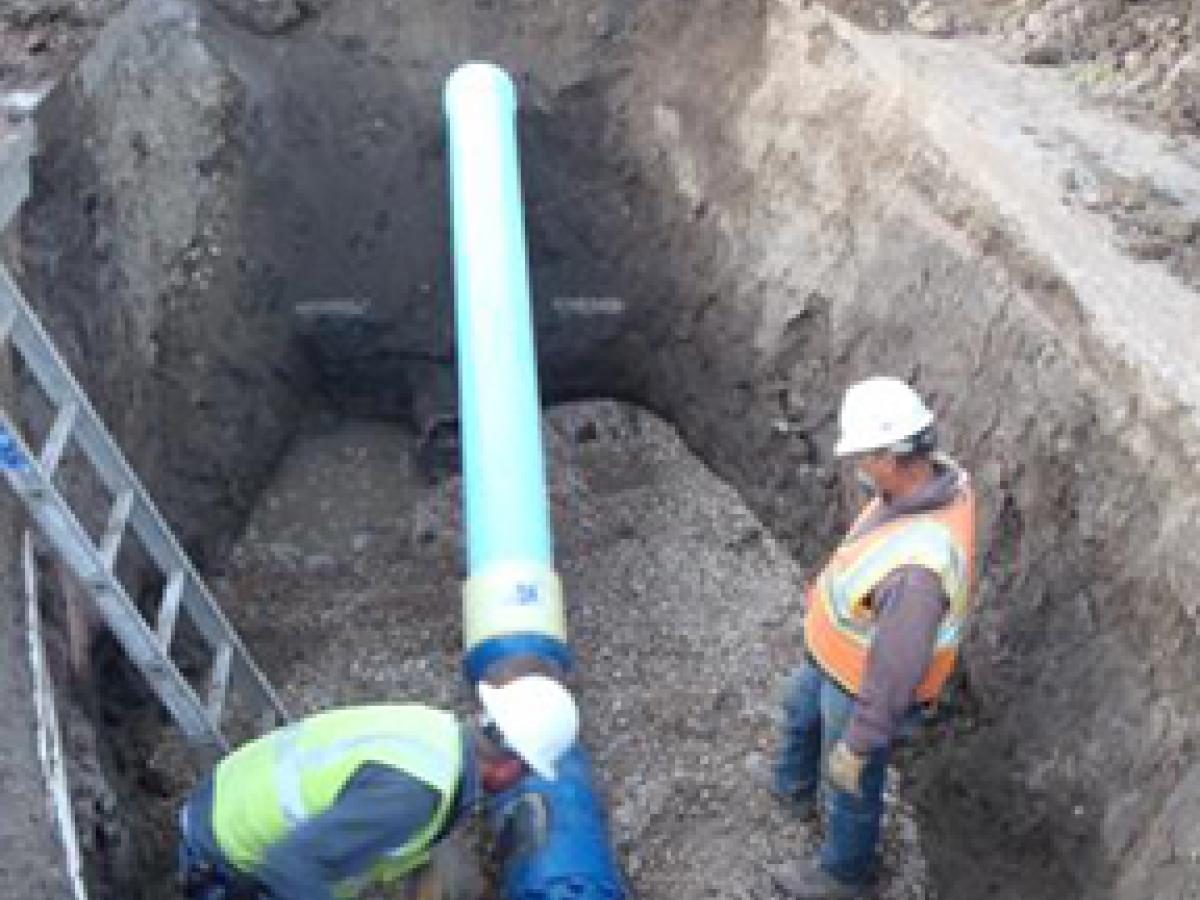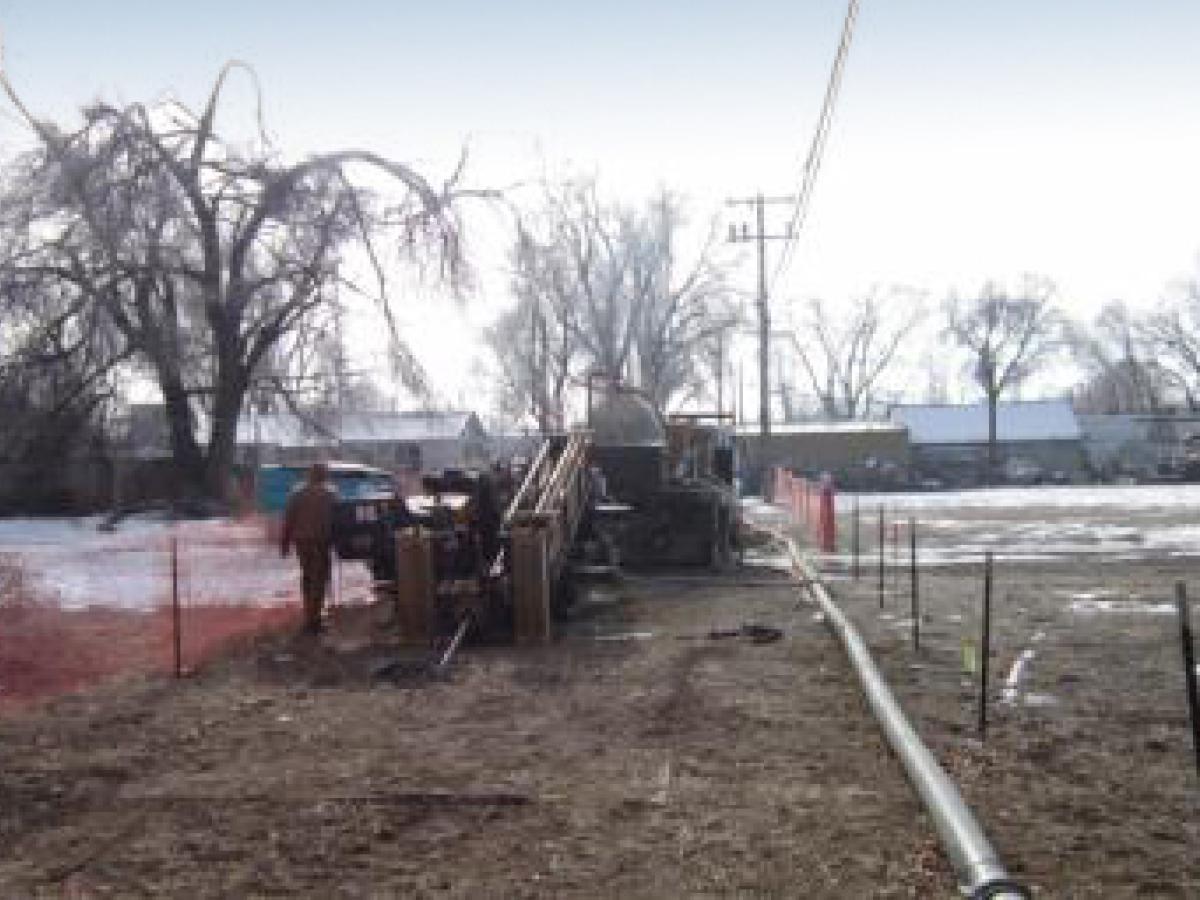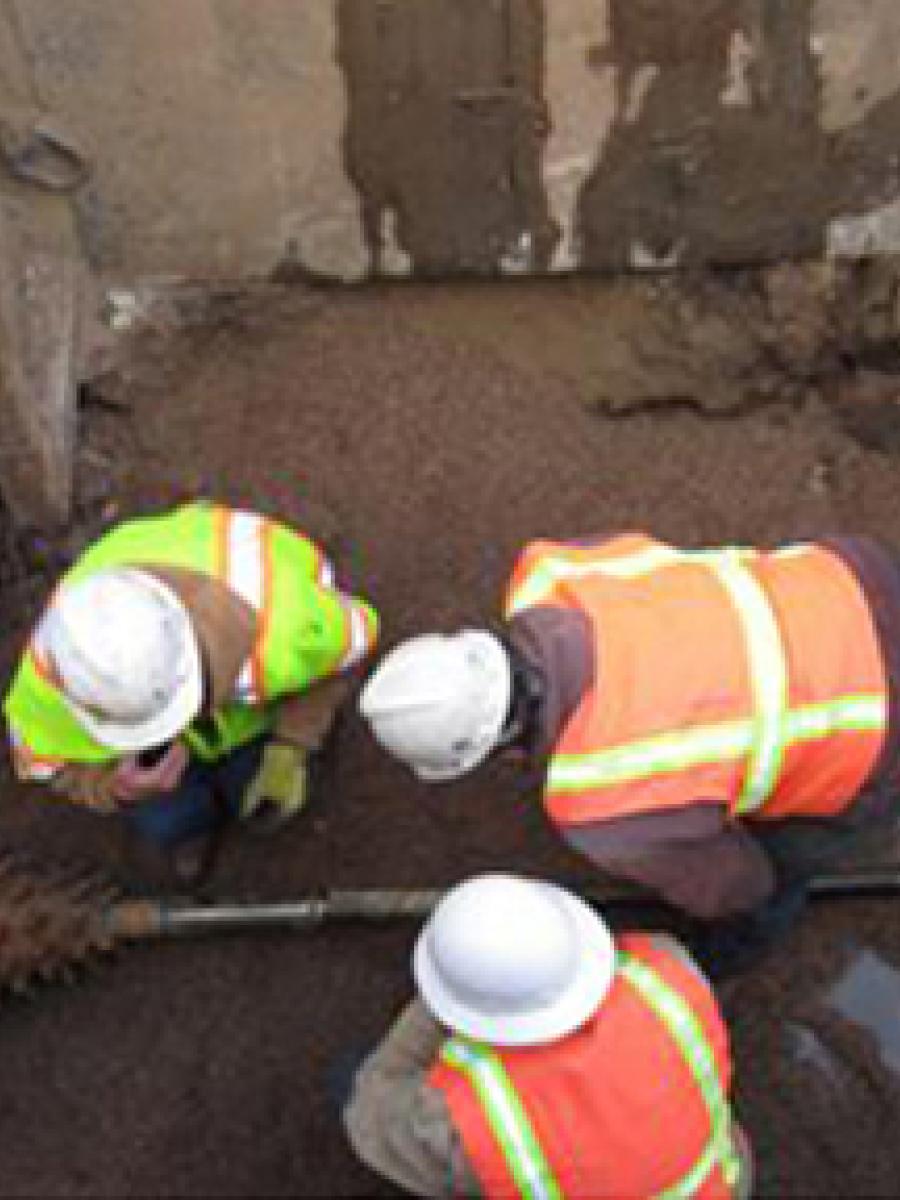Connell Resources subcontracted the pipe reaming to Temple Construction Company LLC of Fort Collins, which licensed the lnneReam pipe replacement system from Nowak Pipe Reaming Inc., for the job. The plan was to upsize the sewer line from its initial mix of 8- and 10-inch diameter pipe to a uniform 12-inch diameter to provide better sewer service to the growing neighborhood. Certa-Flo PVC pipe, from Westlake Pipe & Fittings, is available in 10- and 20-foot lengths allowing for smaller and more economically constructed pit sizes and its light green color also makes it easier to see during camera inspection of sewers.
“We had to use shorter joints and the pipe couldn’t be something fusible,” Saye said. “We liked the option of 10-foot pipe joints because we really didn’t have any more room than that available for stacking them.”
The project launched and work began in August 2011. The reaming process was expertly coordinated to produce seamless pipe installations and minimize sewer service downtime for customers. The pipe reaming was broken up into sections depending on space availability along the line and, often, an open trench run would follow a reamed section. One small section running under a railroad crossing required a pneumatic hammer. After the businesses on the block closed for the day, Connell Resources’ crew, ranging from 15 to 18 workers, disconnected the sewer services of customers along the section to be reamed, removed the downstream and upstream manholes and set up a sewer bypass to continue service. Then, they dug 30-foot long entry and exit pits for the pipe reaming equipment so that Temple Construction could come in early the next morning and get right to work. Throughout the project, the Connell Resources crew used a variety of excavators. John Deere 50D and 60D mini excavators were also used for dirt removal.
Working with a crew of five, Temple Construction, per lnneReam specs, used a Vermeer 24x40 horizontal directional drill, with a 14-inch carbide-toothed conical reaming head. Three crewmembers worked the drill and monitored sewer line grade while two members assembled pipe in the pits. Bores were made approximately 5 feet below surface through clay soil, with slight cobble, to reach the old clay host pipe, which was ground into slurry as the bore moved forward. The removal minimized hydraulic pressure ahead of the drill head.
“We were concerned about what would happen with the pipe fragments and other debris picked up during the ream – if we’d had a service ahead of us that wasn’t disconnected, all of that could have gone into the sewer system and clogged it up.” Temple said. “Fortunately, all of the slurry was evacuated through the manholes, so we had no problems. And, we were impressed with how well the reamer ground up the old clay pipe. When we dumped the first couple of loads from the vac truck, there weren’t any pipe fragments bigger than a penny left in the slurry.”
At the end of each ream, the crew attached the joints of 12-inch Certa-Flo pipe onto the drill head and the pipe string was pulled into place. The crew easily assembled the pipe, adding joint after joint as the pullback process continued. The crew used 10-foot joints in the more constricted sections and 20-foot joints elsewhere.
“We liked the integral bell on the Certa-Flo pipe, which saved us a spline in each assembly, as well as having the option of both 10-foot and 20-foot joints,” Temple says. “It was easy to assemble and held together really well during the pulls.”
The restrained joint PVC pipe was installed to meet a tight-tolerance grade of 0.39 percent and the reaming corrected any pre-existing grade problems. Due to excellent preparation and coordination, the pipe reamings and pullbacks went smoothly and were usually done within 4 hours each day. When the camera inspections of the new sewer line sections were completed, Connell Resources’ crew then reconnected services and filled-in excavations, finishing by the end of the work day. Together, the 1,600-feet of pipe reaming and 2,400-feet of open-trench pipe were finished in December 2011.
The city received very positive feedback from the homeowners and business owners throughout the district. The project produced only minimal disruption and caused no harm to the commercial buildings or homes.
“At the inception of this project, we started talking to people in the neighborhood about it and made sure to keep them extremely well-informed at each step,” Saye noted. “They were, in general, very appreciative with what we were doing, since they were getting better sewer service than they’d had for several years. The project didn’t interfere with them at all and they barely saw anything.”
As for the pipe reaming choice, Saye says it provided an excellent solution to a challenging pipe replacement, but one that could be cost-prohibitive in less-challenging projects.
“We got exactly what we needed out of it - we didn’t tear up any walls or crack slabs – but pipe reaming is not cheap to do,” Saye explained. “We paid a premium, but in this case, it was worth it. All we had to do was crack a wall of a nearby building, and our project would have become a lot more expensive. The project was a success.”
